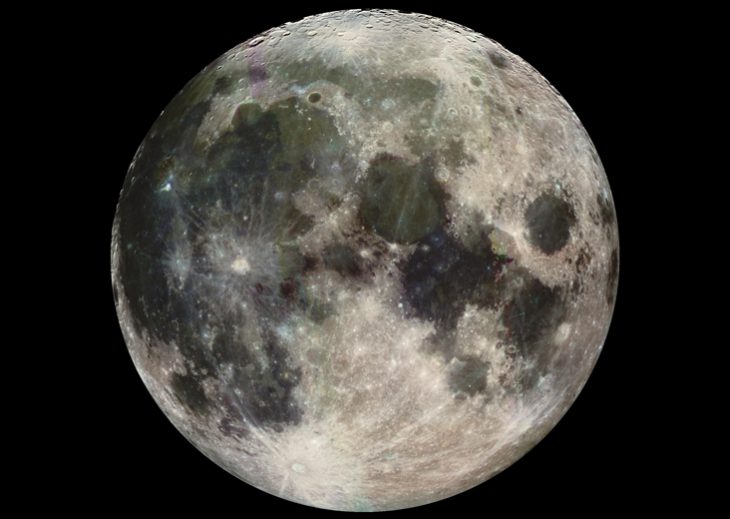Well for me the answer is ”Yes”. How lucky we are to be able to see this image from our backyards pretty much all day every day when weather is good?
Here are a few facts and stats you may like to know;
The distinct bright ray crater at the bottom of the image is the Tycho impact basin. The dark areas are lava rock filled impact basins: Oceanus Procellarum (on the left), Mare Imbrium (center left), Mare Serenitatis and Mare Tranquillitatis (center), and Mare Crisium (near the right edge). This picture contains images through the Violet, 756 nm, 968 nm filters. The color is “enhanced” in the sense that the CCD camera is sensitive to near infrared wavelengths of light beyond human vision. More facts below the image…..
Equatorial radius (km) – 1,737.4, Mean distance from Earth (km) – 384,400, Rotational period (days) – 27.32166
Orbital period (days) – 27.32166, Average length of lunar day (days) – 29.53059, Mean orbital velocity (km/sec) – 1.03
Mean surface temperature (day) – 107°C, Mean surface temperature (night) -153°C, Maximum surface temperature – 123°C, Minimum surface temperature -233°C.

Charles M0OXO
I was born in the 1960’s and have lived all my life in the Coal Mining Town of Barnsley in South Yorkshire, Northern England. My parents were all from this area of Yorkshire and my father worked in the main Industry of the local Collieries as a face worker. I have been married to my wife Debbie for 35+ years and we have two children and two grandchildren.
I have been licensed for around 20 years after my interest was re-kindled when I retired from my role as a Police Officer within South Yorkshire Police Force. The latter few years were spent as Radio Operator in the Force Operations Control Room at Sheffield, before my career ended.
IOTA chasing is (and always has been) my real passion, as climbing the ladder to reach Honour Roll status was always my main aim. The 1000 Islands Trophy is still out of reach but I am heading in the right direction. I am currently a Board Member of IOTA Ltd and IREF.
In my free time I am a keen Photographer of Wildlife, Aviation, (anything really) but the QSL Manager role is my main passion within Ham Radio.
https://www.m0oxo.com/
https://www.m0oxo.com/oqrs/

